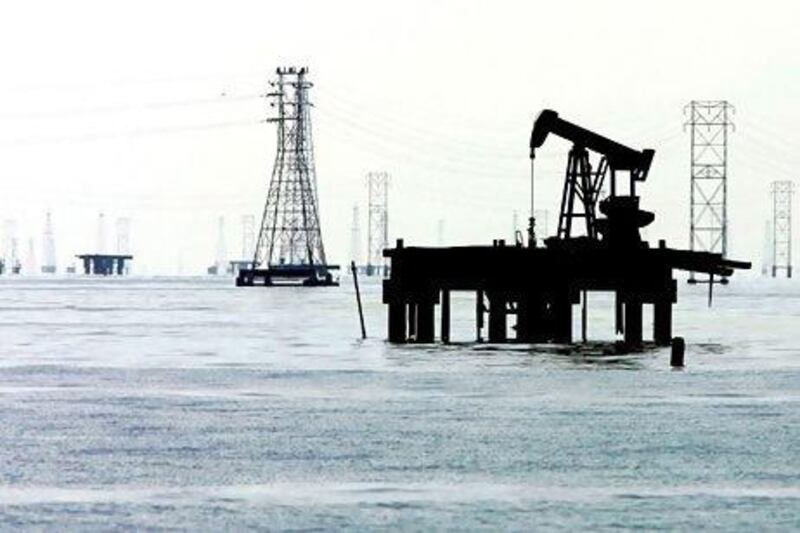[ Opec ]
conceded yesterday that the North American shale boom is challenging its position in the market. It comes just weeks after its members downplayed the significance of rising shale oil production.
Driven by a revived global economy, demand for crude is set to increase next year. But the additional demand will be met by non-Opec producers, the organisation said in its monthly
[ oil ]
market report, released yesterday.
According to the report, supply from outside Opec will increase by 1.1 million barrels per day (bpd) next year, surpassing non-Opec supply growth of just under 1 million bpd this year.
"The strong growth trend seen in 2013 is expected to continue in 2014," Opec said.
This year's increase in demand of 800,000 bpd will rise to 1.1 million bpd next year, raising average global demand to 90.7 million bpd. The increase in demand of 300,000 bpd equals the decline on the call on Opec next year, meaning that additional demand is essentially absorbed by non-Opec production.
"Based on the initial 2014 forecasts for world oil demand and non-Opec supply . demand for Opec crude next year is projected to average 29.6 million bpd, representing a decline of [300,000] bpd," said the report.
According to the report, the bulk of additional non-Opec oil will be pumped in the Americas, where 700,000 bpd will be added to supply.
The increase is largely due to the increase of shale oil production in North America, made possible by new extraction techniques that have already revolutionised the US natural gas sector.
Hydraulic fracturing, or fracking, allows producers to extract oil and gas from deep-lying shale rock formations, dramatically increasing reserves. The shale revolution has led the International Energy Agency to predict that US and Canadian supply will grow by nearly 4 million bpd in the five years to 2018, almost two thirds of non-Opec supply growth.
"North America has set off a supply shock that is sending ripples throughout the world," said Maria van der Hoeven, the IEA's executive director.
But until now, Opec has been dismissive of the effect that new sources of oil will have on its position in the market.
"This is not the first time new sources of oil are discovered - don't forget history," said Ali Al Naimi, Saudi Arabia's oil minister, during the last Opec meeting, held last month. "There was oil from the North Sea and Brazil, so why is there so much talk about shale oil now?"
Added Abdalla El Badri, Opec's secretary general: "Opec will be around after shale oil finishes."
Yesterday's report suggests that shale oil is already altering the dynamics of the market.
But analysts are sceptical whether assumptions on non-Opec supply growth outside North America are realistic.
"Their expectations are largely based on a fairly optimistic assumption of non-Opec supply growth," said Amrita Sen, the chief oil analyst at Energy Aspects. "Given the reality in the past few years and even this year, where downgrades have been made to non-Opec supplies excluding the US, we wouldn't expect a significant change to the trend next year either."
Opec sounded a cautionary tone over the scale of demand revival next year, which according to its own forecasts will rebound at the strongest pace since 2010.
"The world oil demand estimate for 2014 is subject to uncertainties depending on the pace of recovery in economic growth in the US, the euro zone and China," it said in the report.
Opec cut production last month by about 300,000 bpd, a decline due mostly to disruption to output in Libya.
The UAE increased production slightly by 20,000 bpd to 2.7 million bpd.





